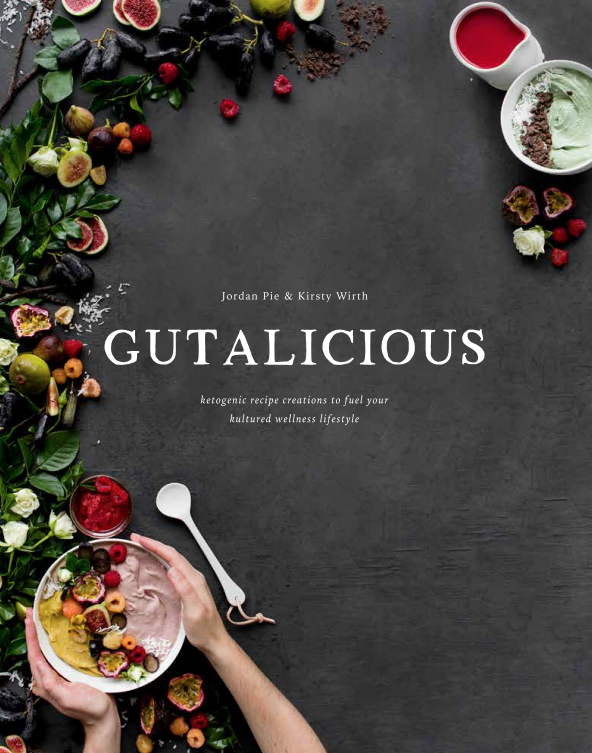Do you ever suffer from uncontrollable, intense sugar cravings? Do you often get to 11am or 3pm and your energy levels, focus, mood and motivation begin to spiral because you need to get a sugar hit to perk yourself up again?
Sugar is a sneaky and highly addictive substance and the break up with sugar isn’t always as easy as just making the decision to stop eating it cold turkey. Having even just a little bit creates a desire for more, and suddenly quitting sugar can cause withdrawal symptoms such as; headaches, irritability, fatigue and even more intense sugar cravings.
BUT, it doesn’t have to be this way. You really can break up with sugar….for GOOD. Trust me, I’ve done it, I’ve broken the sugar addiction myself. Years ago I could easily eat a block of Cadbury chocolate every single day + more sugary treats. Fast forward to a few years later and now I don’t even come close to thinking about how I can get my next sugar fix. Kicking those sugar cravings doesn’t have to be painful or difficult or full of deprivation. You just have to re-evaluate your approach, you can start with the 4 easy steps below.
1. AVOID UNNECESSARY ADDED SUGARS
It’s important to know where you may be consuming your sugar, besides the usual suspects of cakes, lollies, soft drinks and ice-cream. If you begin to educate yourself on all the different forms of sugar that can be seen included in products ingredients lists, you can then start to learn what should be avoided. Below is a list of artificial sweeteners, man-made sugars, sugar alcohols, technical sugars and natural sugars. It’s just a small list, there are way more other ‘added’ sugars to look out for, however these are some of the main ones.
Aspartame (also known as Sweetener 951)
Nutra-sweet
Stevia (when it’s made with fillers and other artificial sweeteners – in its natural form it’s not artificial)
Sucralose (or Splenda)
Equal
Sweet-n-low
Sorbitol
Truvia
Saccharin
Caramel
Xylitol
Glycol
Glycerin
Agave Nectar/ Syrup (This is very processed and has the highest fructose content of any commercial sweetener – with the exception of pure fructose)
Barley Malt Sugar/ Syrup
Brown Sugar
Demerara Sugar
Cane Sugar
Caster Sugar
Corn Sugar
Dextrin
Dextrose (another name for Glucose)
Disaccharide
Fructose
High Fructose Corn Syrup
Humectant 422
Icing Sugar
Juice Concentrate (derived from fruit)
Molasses (can be highly processed)
Glycerin
Glucose (also known as Dextrose)
White Sugar
Raw Sugar
Whey Dextrose
Glucose Syrup
Sucrose
Rice Malt Syrup
Maltodextrin (can be derived from wheat)
Wheat Glucose Syrup
Here are a few examples of how sneaky manufacturers can be with adding in different types of sugar. I’ll highlight the different types of sugar in BOLD below.
Gluten Free Muesli
Whole Grain Brown Rice (85%), Sugar, High Fructose Corn Syrup, Apple Juice Concentrate, Cinnamon, Salt, Vitamins (Vitamin E [Soy], Niacin, Vitamin B6, Thiamin, Riboflavin, Folate), Emulsifier (471), Minerals (Iron, Zinc Oxide).
Ice Cream
Cream (30%), Skim Milk (Concentrate Or Solids), Water, Sugar, Glucose Syrup (Wheat), Hazelnuts (2%), Golden Syrup, Milk Solids, Cocoa Solids (1%), Dextrose, Brown Sugar, Thickener 91442), Vegetable Origin Emulsifiers [471 (Soy), 422 (Soy), 476], Vegetable Oil, Vegetable Gums (410, 440, 415), Murray River Pink Salt (0.1%), Flavours, Mineral Salt (339), Colours (150a, 150d), Salt.
BBQ Sauce
Concentrated Tomatoes, Vinegar, Invert Sugar Syrup, Sugar, Molasses, Salt, Spices, Thickener (Xanthan Gum), Garlic, Flavours.
Bacon
Australian Pork (95%), Water, Salt, Thickener (1414), Sugar, Tapioca Starch, Mineral Salts (451, 450), Flavouring (Maltodextrin), Hickory Smoke, Flavour (0.2%)), Antioxidant (316), Preservative (250).
Popular Chocolate Bar
Sugar, Vegetable Fat, Wheat Glucose Syrup, Milk Solids, Cocoa Butter, Sweetened Condensed Milk, Biscuit (Wheat Flour, Sugar, Tapioca Starch, Salt, Thickener (461), Dextrose, Emulsifier (471), Food Acid (334), Raising Agent (500)), Cocoa Mass, Invert Sugar, Cocoa Powder, Humectant (422), Emulsifiers (Soy Lecithin, 471, 476), Salt, Raising Agent (500), Flavours.
So now you know what to start looking out for on the packaging of ALL products, even organic products.
2. FOCUS ON BREAKFAST
By having a good quality breakfast, this sets your body up correctly for the day ahead. When you consume quality protein and fats for breaky (and with lunch and dinner), this will help to stabilise your blood sugar levels, it will keep you satiated for longer, it also helps to really engage your brain, it impacts your focus, mood and motivation for the rest of the day too. Additionally, it helps to deter sugar and carbohydrate cravings that usually appear later on in the day.
Whenever I make my breakfast I always make sure it has a good source of quality protein, fat and veggies loaded with fibre so they will give me stable energy levels to last me to lunch time without even thinking of reaching for a sugary snack. Here are a few of my favourite savoury breakfasts that really do keep me going and going and going.
If you’re after more delicious, healthy and gut friendly recipes for breakfast, lunch, dinner and (sugar free) dessert + everything in between I have plenty more to choose from in my cookbook GUTALICIOUS.
3. CONSUME QUALITY FATS WITH YOUR MEALS
Let’s clear up the myth that fat is bad for you. So many of my clients, even some of my friends and family are still afraid of fat and think butter is evil. But our body is actually well designed to run primarily on fat as a source of energy and when it does, it produces ketone bodies, which are perfectly healthy.
HERE ARE A FEW FUN FACTS ABOUT FAT;
The human brain is composed of 60% fat
Fat is part of every cell membrane in the body
Fat helps to transport nutrients and metabolites across cell membranes
Your body utilises fat for everything from building immune function to activating and balancing hormones
Most sources of natural saturated fat such as grass-fed butter, ghee, lard and tallow all contain high amounts of fat soluble vitamins A, D, E & K
Saturated fat helps the liver flush out any fat accumulation within in
Gall bladder health requires fat
Blood sugar balance requires fat
Detox requires fat
Protein digestion and utilisation requires fat
Consuming quality fats deters sugar/ carbohydrate cravings
I always make sure I add some source of quality fat to each meal I eat because it allows me to be completely satiated and satisfied for a long time. Some healthy fats include those found in avocados, olives, nuts and seeds (preferably activated), coconut, cold pressed oils such as macadamia oil and olive oil, and the natural fats found in animal products such as wild salmon and other fatty fish, pastured eggs, grass-fed butter, ghee, lard, tallow and duck fat just to name a few.
4. CONSUME PROBIOTIC RICH FOODS
Pathogenic bacteria, parasites, and yeast, such as candida feed off sugar and even promote sugar cravings. The more sugar you eat, the more inviting you make your gut for these “bad guys.” When you consume probiotic rich foods, they naturally help to reduce pathogenic bacteria and yeasts like candida in your body which is why your sugar cravings will reduce. At the same time they increase the bioavailability of vitamins and nutrients in your food and provide probiotics and enzymes which support your digestive health. You can read more about that here;
SUMMARY
So my 4 top tips on how you can naturally reduce/ deter your sugar cravings are;
1. Avoid added sugars by reading the ingredients list on packaging
2. Consume a balanced breakfast with good fats, protein and veggies with loads of fibre
3. Consume quality fats, as they will keep you satiated, keep your blood sugar levels stable + deter sugar cravings
4. Consume more homemade probiotic rich foods to reduce sugar cravings
So while it’s obviously important to kick the sugar habit so it’s no longer ruling your life, I also believe that you should be able to enjoy a delicious (sugarless) treat every now and then to make giving up sugar easier. This is why I’ve created 2 resources that have loads of gluten, dairy, nut, egg, grain and sugar free options that are suitable for those who’re on a keto, paleo or low-carb diet. Click on the images below for more information.
Jordan xx







